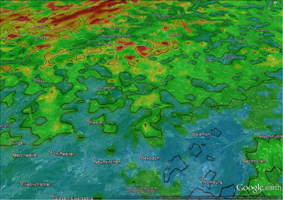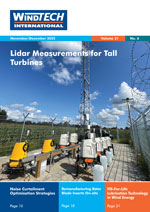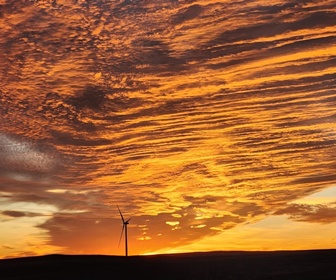Machine Learning Techniques Reduce Uncertainty in Long-Term Performance Reference
 EWC Weather Consult, a German pioneer in the optimisation of weather data, has developed a long- term correction method for wind measurements giving far superior results. By using machine learning processes EWC has created a method that successfully minimises yield uncertainties. The new method makes it possible to use non-linear corrections, and by doing so the error in the yield estimates on a wind time-series can be reduced to only 3% on average, even for very complex sites. This is half the error level achieved using the matrix method and one-fifth of the error associated with sector-based linear regression in site assessments.
EWC Weather Consult, a German pioneer in the optimisation of weather data, has developed a long- term correction method for wind measurements giving far superior results. By using machine learning processes EWC has created a method that successfully minimises yield uncertainties. The new method makes it possible to use non-linear corrections, and by doing so the error in the yield estimates on a wind time-series can be reduced to only 3% on average, even for very complex sites. This is half the error level achieved using the matrix method and one-fifth of the error associated with sector-based linear regression in site assessments.
By Jon Meis, Managing Director, EWC Weather Consult, Germany
 EWC Weather Consult, a German pioneer in the optimisation of weather data, has developed a long- term correction method for wind measurements giving far superior results. By using machine learning processes EWC has created a method that successfully minimises yield uncertainties. The new method makes it possible to use non-linear corrections, and by doing so the error in the yield estimates on a wind time-series can be reduced to only 3% on average, even for very complex sites. This is half the error level achieved using the matrix method and one-fifth of the error associated with sector-based linear regression in site assessments.
EWC Weather Consult, a German pioneer in the optimisation of weather data, has developed a long- term correction method for wind measurements giving far superior results. By using machine learning processes EWC has created a method that successfully minimises yield uncertainties. The new method makes it possible to use non-linear corrections, and by doing so the error in the yield estimates on a wind time-series can be reduced to only 3% on average, even for very complex sites. This is half the error level achieved using the matrix method and one-fifth of the error associated with sector-based linear regression in site assessments.By Jon Meis, Managing Director, EWC Weather Consult, Germany










